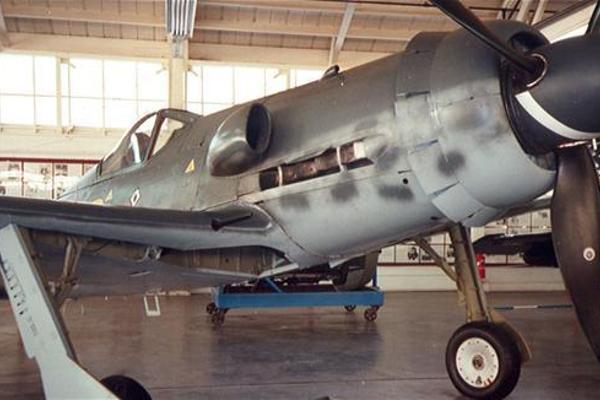Over 50 missing warplanes found buried in central Turkey: Report
KAYSERİ


The FW-190A3 warplanes reportedly buried at the behest of the United States, daily Sabah reported Oct. 14. According to the daily, the planes disappeared in 1947 when the U.S. decided to send aid to Turkey and were deleted from the inventory in line with the aid plan.
Official efforts to find the missing 72 warplanes started in 2015 and tests were conducted with metal detectors. The machines determined the whereabouts of the warplanes, but bureaucracy hindered officials from unearthing the planes.
In addition to the bureaucracy, the failed July 15 failed coup, believed to have been masterminded by the followers of the U.S.-based Islamic preacher Fethullah Gülen, obstructed officials’ efforts.
The daily also said the planes carried special significance in terms of local production. Cooperation between Turkey and Germany continued after World War I and paved the way for production cooperation with German aircraft manufacturer Junkers. Afterward, Turkey’s first plane factory was founded, producing A-20 model planes.
To continue mutual production, a trade deal was signed between Turkey and Nazi Germany in 1941 following the efforts of former Chancellor Franz von Papen. Turkey sold iron and chrome ore to Germany and, in exchange, acquired 72 FW-190A3 warplanes.
The planes, whose pieces were produced in Anatolia, were brought to Turkey in 1943. The planes made their first flight on July 10, 1943, and were distributed to five provinces. A total of 50 of the planes were sent to Kayseri before disappearing in 1947.
According to newly surfaced documents, the U.S. wanted Turkey to destroy all German FW-190A3 warplanes in order to sell its planes that had remained unsold after World War II. As a result of lengthy talks with Ankara, the planes were never seen again.
Uluhan Hasdal, who has been investigating the issue for nearly 25 years, said the U.S. offered to give Turkey the planes without charge on the condition that Turkey destroyed the German planes.
“The U.S. wanted to give its planes without charge. However, they had only one condition; the destruction of the German planes. Nearly 50 warplanes were brought to Kayseri Airport and were left outside the inventory. According to the documents, the planes were buried while wrapped in oily canvases,” he said.
“[German authorities] told me that the planes were resistant to corrosion and could fly if they are unearthed,” he said.
Official efforts to find the missing 72 warplanes started in 2015 and tests were conducted with metal detectors. The machines determined the whereabouts of the warplanes, but bureaucracy hindered officials from unearthing the planes.
In addition to the bureaucracy, the failed July 15 failed coup, believed to have been masterminded by the followers of the U.S.-based Islamic preacher Fethullah Gülen, obstructed officials’ efforts.
The daily also said the planes carried special significance in terms of local production. Cooperation between Turkey and Germany continued after World War I and paved the way for production cooperation with German aircraft manufacturer Junkers. Afterward, Turkey’s first plane factory was founded, producing A-20 model planes.
To continue mutual production, a trade deal was signed between Turkey and Nazi Germany in 1941 following the efforts of former Chancellor Franz von Papen. Turkey sold iron and chrome ore to Germany and, in exchange, acquired 72 FW-190A3 warplanes.
The planes, whose pieces were produced in Anatolia, were brought to Turkey in 1943. The planes made their first flight on July 10, 1943, and were distributed to five provinces. A total of 50 of the planes were sent to Kayseri before disappearing in 1947.
According to newly surfaced documents, the U.S. wanted Turkey to destroy all German FW-190A3 warplanes in order to sell its planes that had remained unsold after World War II. As a result of lengthy talks with Ankara, the planes were never seen again.
Uluhan Hasdal, who has been investigating the issue for nearly 25 years, said the U.S. offered to give Turkey the planes without charge on the condition that Turkey destroyed the German planes.
“The U.S. wanted to give its planes without charge. However, they had only one condition; the destruction of the German planes. Nearly 50 warplanes were brought to Kayseri Airport and were left outside the inventory. According to the documents, the planes were buried while wrapped in oily canvases,” he said.
“[German authorities] told me that the planes were resistant to corrosion and could fly if they are unearthed,” he said.
